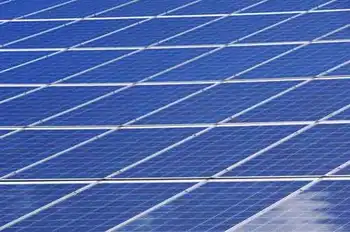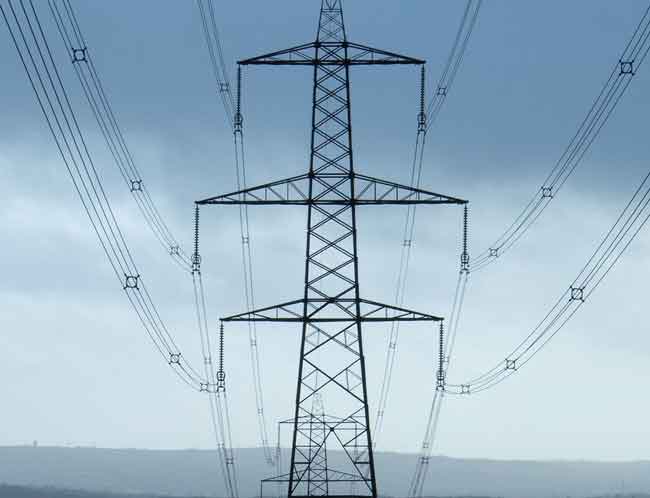Marin supervisors move forward with “clean energy” authority
By Marin Independent Journal
Arc Flash Training CSA Z462 - Electrical Safety Essentials
Our customized live online or in‑person group training can be delivered to your staff at your location.

- Live Online
- 6 hours Instructor-led
- Group Training Available
Chief among those projects would be the Marin Clean Energy initiative, which calls for the authority to compete with PG&E as the retailer of electricity to Marin customers, in order to boost usage of renewable energy in the county.
Supervisors voted after listening to a plea from PG&E representatives to forgo formation of the authority and to partner with the shareholder-owned utility to reduce greenhouse gases.
Advocates for Marin Clean Energy have estimated a Marin energy authority would be able to provide electricity that is 25 percent renewable by 2010 at the same price that PG&E is charging. By comparison, PG&E has said it may be unable to boost its use of renewable energy to 20 percent by 2010, as required by a state law passed in 2002.
However, PG&E consultant Joe Nation said that by partnering with the utility the county could reduce the rate of greenhouse gas emissions from electricity in the county by nearly 40 percent by 2020, and could start in 2010 with lower greenhouse gas emissions than the Marin Clean Energy plan.
Supervisor Charles McGlashan said that estimate differed widely from previous estimates prepared by county staff and would need to be reviewed.
Nation, an environmental consultant and former state assemblyman from San Rafael, said his calculations include nuclear energy and large hydroelectric projects because they contribute no greenhouse gas emissions. In 2007, PG&E got about 24 percent of its energy from nuclear generation and 12 percent from large hydro projects.
"I think the challenge here is really about greenhouse gases," Nation said.
PG&E's representatives repeated an offer the utility first made in August to sell 100 percent renewable electricity to Marin customers who request it and agree to pay a 20 percent premium. The PG&E team said the company is willing to work with the county of Marin and Marin cities to finance and construct solar energy photovoltaic or other renewable energy facilities. PG&E also pledged to expand existing programs such as those boosting energy efficiency and promoting green jobs.
PG&E provided no estimate, however, as to how much it would be willing to spend on such a partnership.
Larry Simi, PG&E's director of government affairs, said the utility would seek the California Public Utility Commission's approval for the "pilot program" in June or July of next year. PG&E originally said the plan would go to the commission no later than Jan. 1, 2009.
PG&E representatives warned that members of a joint powers authority could be putting their own financial solvency at stake when the authority enters into contracts with energy suppliers or issues bonds to build renewable energy projects.
Most members of the public who commented on PG&E's proposal prior to the supervisors' vote were unimpressed.
"That is feeble, a feeble offering at the last moment," said Megan Matson, one of the organizers of Mainstreet Moms, a local activist group.
Roger Roberts, a Marin Conservation League board member, said, "There is not much meat on the bones."
Barbara George of Fairfax, founder of Women's Energy Matters, characterized PG&E's approach as, "zero percent solar, 2 percent wind and 98 percent hot air."
County supervisors also showed no interest in delaying formation of the joint powers authority, although they promised that any concrete proposals that PG&E made would be given serious consideration.
McGlashan said he was "slightly offended" by a remark by Simi that county representatives had failed to meet with PG&E executives to discuss their recent proposals.
"We have been asking you repeatedly for two years to look at Marin Clean Energy and come up with a partnership scenario that would work well," McGlashan said. "Don't blame staff."
Supervisor Steve Kinsey said, "Many of us felt we didn't have the chance to meet with PG&E for the last few years. It's time to get serious."
Not everyone at the meeting had jumped on the Marin Clean Energy bandwagon, however.
Richard McCamish of San Rafael said he was worried about the county and Marin cities entering into an ambitious venture in the midst of the worst economic crisis since the Great Depression.
"It's our taxpayer dollars," McCamish said. "I ask that you not move forward until you get the approval of the voters of this community who elected you to office."
So far, six Marin city councils, including Mill Valley's, have approved first readings of an ordinance that would enlist them as members of the joint powers authority. In each case, a second vote is required for the decision to become final.











